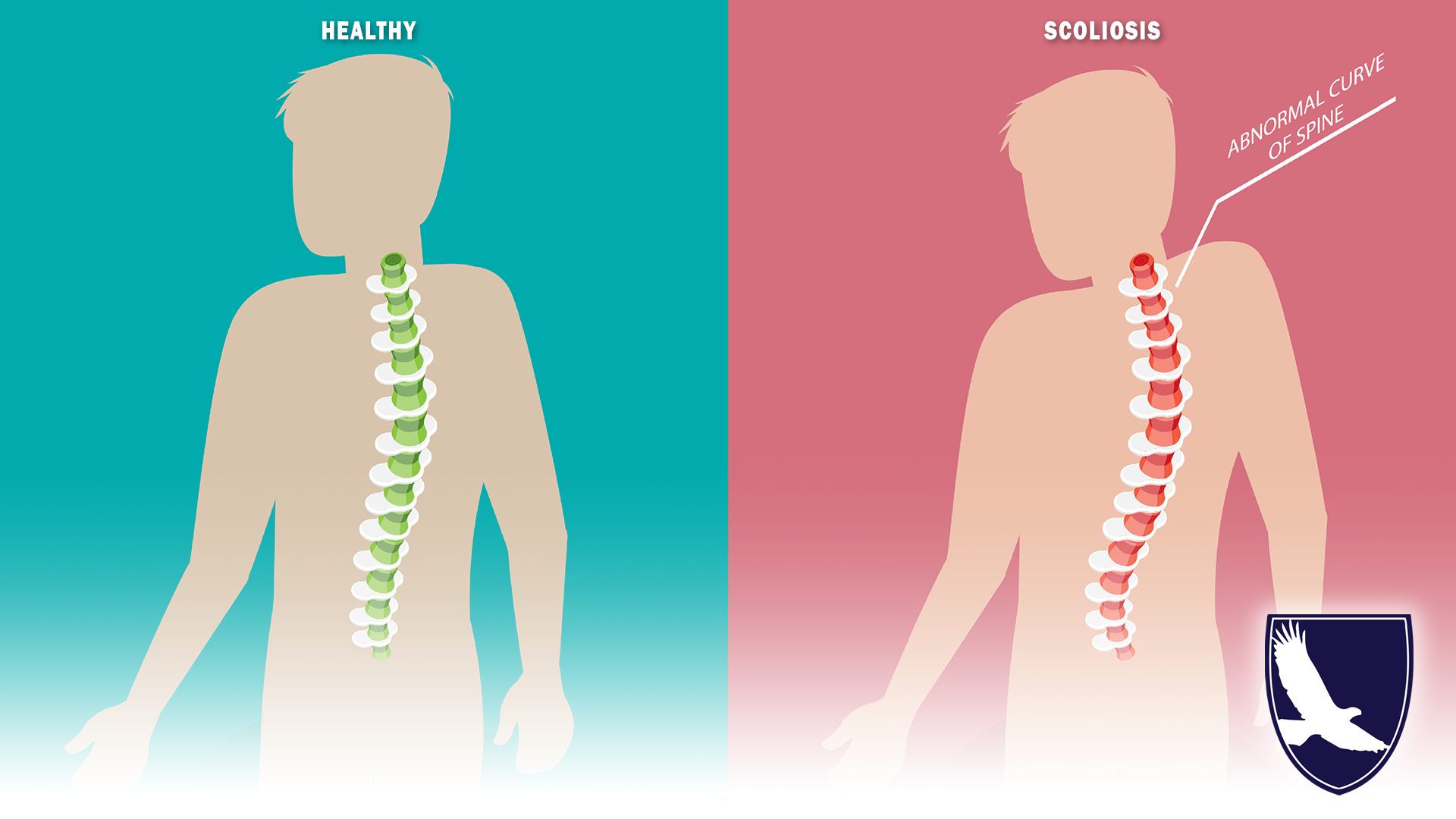Can I Get Social Security Disability If I Have Scoliosis?
Scoliosis can be a disabling condition, depending on its severity

Scoliosis is a condition in which the spine curves abnormally. Scoliosis can be caused by many factors, including congenital birth defects or nervous system disorders, such as cerebral palsy or muscular dystrophy. However, in most cases, the cause of scoliosis is not known. Symptoms associated with scoliosis can range from minor pain to severe deformation and inability to effectively ambulate.
Am I likely to get my disability claim approved based on my scoliosis?
To determine whether you meet their definition of being disabled, Social Security relies on a variety of factors, including the severity of your symptoms, the effectiveness of treatment options, the strength of your medical evidence, your age, your education level and the type of work you have done. To be approved, your scoliosis must be supported with strong medical evidence. Medical evidence can include X-rays, MRIs, and CT scans.
What process does SSA use to determine if my scoliosis qualifies for disability benefits?
Social Security employs a 5-step sequential evaluation process to determine if you qualify for disability benefits under the SSDI and/or SSI programs. At each phase of a disability claim, there is an adjudicator, or decision-maker. At the Initial Application and Reconsideration phases, the decision-maker is a DDS Examiner who works in consultation with a DDS Physician. At the Hearing phase, the decision-maker is the Administrative Law Judge who often consults with a Medical Expert (ME). The following evaluation is employed by the adjudicator at each phase.
Step 1: Non-Medical Criteria
First and foremost, you cannot be working above what Social Security calls a Substantial, Gainful Activity (SGA) level. Basically, you cannot be earning more than $1,090 on a gross (pre-tax) monthly basis. The SGA rule is the most important non-medical criteria, but there are other non-medical criteria that also must be satisfied in order for the claim to progress to a complete medical review at Step 2.
No matter how severe and disabling your scoliosis may be (even if it is well-supported by years of medical evidence), if you do not meet the non-medical eligibility requirements, your claim will not advance to Step 2 and your claim will be technically denied. You can appeal a technical denial but, generally speaking, if the facts are correct, the appeal will not be successful.
Step 2: Severe Impairment
The question at Step 2 is simply, “Are your conditions severe?” To answer this question, all medical evidence is assembled. If you have an Attorney or Non-Attorney Representative, they should be heavily involved in this process. The adjudicator can also request that you complete Activities of Daily Living and Vocational Questionnaires, which provide an opportunity for you to communicate how your symptoms have impacted your ability to function normally. The adjudicator may also schedule a Consultative Examination (CE) with a doctor who is contracted by DDS to perform medical evaluations on their behalf. Once all evidence has been assembled, the adjudicator reviews the information and decides whether or not your symptoms are severe.
To be considered severe, the symptoms must limit your ability to perform basic work-like activities. Severity can take many forms, including physical limitations, such as limited ability to lift, push, carry things, etc. If your symptoms are determined to be non-severe, your claim will be denied at Step 3 and you would have the opportunity to appeal this denial. However, if the conditions are determined to be severe, your claim progresses to Step 3 for further analysis.
Step 3: Medical Listings
At Step 3, the question is whether your scoliosis meets or equals a medical “Listing.” Social Security has broken down the human body and mind into 14 different Impairment categories, called the Listing of Impairments. Scoliosis claims are typically evaluated under Listing 1.04 Disorders of the Spine, which is a subset of Listing 1.00 Musculoskeletal System impairments. Disability under Listing 1.04 requires at least one of the following: a herniated disc, spinal pain radiating throughout the body, nerve compression, osteoarthritis, degenerative disc disease, arthritis in the spinal joints or a fractured vertebra, resulting in compression of either a nerve root or the spinal cord. Each of these conditions must also cause nerve root compression and pain, limitation of motion of the spine, motor loss associated with muscle weakness, sensory or reflex loss, and a positive straight-leg raising test; or lumbar spinal stenosis, spinal pain causing a change in position or posture more than once every two hours, or compression of the lower (lumbar) spine causing chronic pain and preventing effective walking. Diagnosis and evaluation of these impairments must be supported by medical records from a treating physician, including X-rays, CAT scans, MRIs, myelograms and bone scans. If the adjudicator reviews your medical records and determines you meet a medical listing, you are found to be Disabled at Step 3 and you are eligible to receive disability benefits. If, however, you do not meet a medical listing, the claim proceeds to Step 4.
Step 4: Past Work
The objective of Step 4 is to determine whether you have the ability to perform work you have performed previously. To determine what you are capable of doing, the adjudicator develops your Residual Functional Capacity (RFC). Your RFC identifies what your body and mind can still do after considering all of your medical symptoms, including mental and physical. The adjudicator will estimate your ability to perform such functions as lifting, carrying, pushing, pulling, reaching, handling, stooping, crouching, remembering, understanding, etc. Your RFC might contain some of the following limitations: inability to lift and carry more than 10 pounds, inability to climb ropes or ladders, inability to use your fingers for fine motor manipulation, etc.
Once the adjudicator has developed your RFC, they will then list your Past Relevant Work (PRW), which is any job you performed during the 15 year period immediately preceding the Alleged Onset Date (AOD) of your disability. In general, if there is a job that you performed within 15 years of your AOD in which you worked close to full-time for a period of at least a few months, that job will likely be considered Past Relevant Work.
After finalizing your list of Past Relevant Work, the adjudicator must now classify it. The type of work you have done in the past will be classified by both exertional level and by skill level. For example, a Nurse works at the Medium exertional level and the position is considered Skilled, while a Security Guard works at the Light exertional level and the position is considered Semi-Skilled. Once all of your PRW has been classified, the adjudicator must then determine whether you have the functional ability to perform any of your past work. If the adjudicator determines you can still perform the functions required in you past work, you will be found Not Disabled and denied. You would then have the opportunity to appeal this denial. However, if you cannot perform your prior work, the analysis proceeds to Step 5.
Step 5: Other Work
Step 5 considers whether you can perform any other type of work, even if you have not performed it in the past. The adjudicator utilizes the same Residual Functional Capacity (RFC) developed in Step 4, and also considers your Age, Education, and Work Experience.
To start, Social Security classifies your Education level as follows:
- Illiterate (or unable to communicate in English)
- Marginal (generally 6th grade or less)
- Limited (generally 7th through 11th grades)
- High school (and above)
The Education level is important as it affects the skill level of different jobs that you might be able to perform. For example, if you have a Marginal education, then you would be limited to performing Unskilled jobs, but if you have a High school education then you would be expected to be able to perform both Semi-Skilled and Skilled jobs.
The adjudicator will then consider your Work Experience, specifically any skills and abilities you acquired from your past work. The fact that you are now at Step 5 means the adjudicator determined at Step 4 that you can no longer perform your past work. However, the adjudicator will consider whether any of the skills and abilities you learned from your past work would transfer to a different job.
For example, a Nurse who performed her job at the Medium exertional level and who can no longer perform her past work due to her scoliosis might have acquired skills which would transfer to a Medical Assistant position, which she could perform at the Light exertional level.
Finally, the adjudicator will consider the last factor, Age. Social Security evaluates adults in several Age categories:
- Younger (ages 18-49)
- Closely approaching advanced age (ages 50-54)
- Advanced age (ages 55-59)
- Closely approaching retirement age (ages 60+)
While Younger individuals have the burden of proving they are unable to perform any type of work, the burden is lessened in the more advanced age categories. Social Security refers to this premise as the Medical-Vocational Guidelines, or the “Grid Rules” because the key factors are laid out in a grid with the final column being a determination of either Disabled or Not Disabled. Basically, the older, less educated and the fewer transferable skills you acquired in your past work, the more likely you are to be found Disabled. It is difficult to get claims approved for scoliosis if you are a Younger individual, because oftentimes the adjudicator will conclude you are able to perform a sit down or sedentary job, such as telemarketing or assembly work.
If the adjudicator determines you can perform some other type of work, based on your age, education, and prior work experience, you would be found Not Disabled and denied. You would have the opportunity to appeal this denial. If, however, the adjudicator determines you cannot perform any other type of work, you would be found Disabled and approved for disability benefits at Step 5.
Conclusion: Will my disability claim be approved?
Social Security disability claims based on scoliosis are never easy to get approved, but they can be approved if the claim is developed and presented properly.
If you would like to discuss the specifics of your case with a disability expert now, please contact us. We will do everything possible to get your claim approved.
Share via:
HIRE AMERICA'S DISABILITY EXPERTS NOW
If you need disability benefits, hire Quikaid now. You will not regret it. We will do everything possible to get your claim approved.
Sign our contract now online, complete our Free Case Evaluation, or call (800) 941-1321 so we can start the process of getting you approved for benefits! You have nothing to lose, and everything to gain.
The time to get started is NOW!




